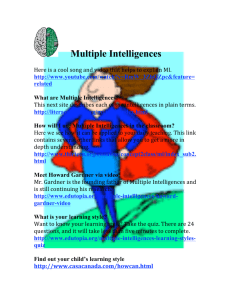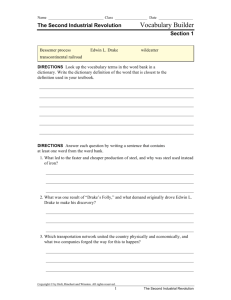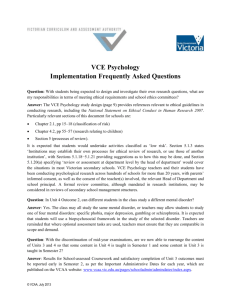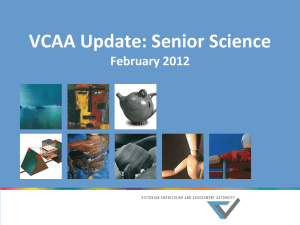Effective Pedagogy points for history
advertisement
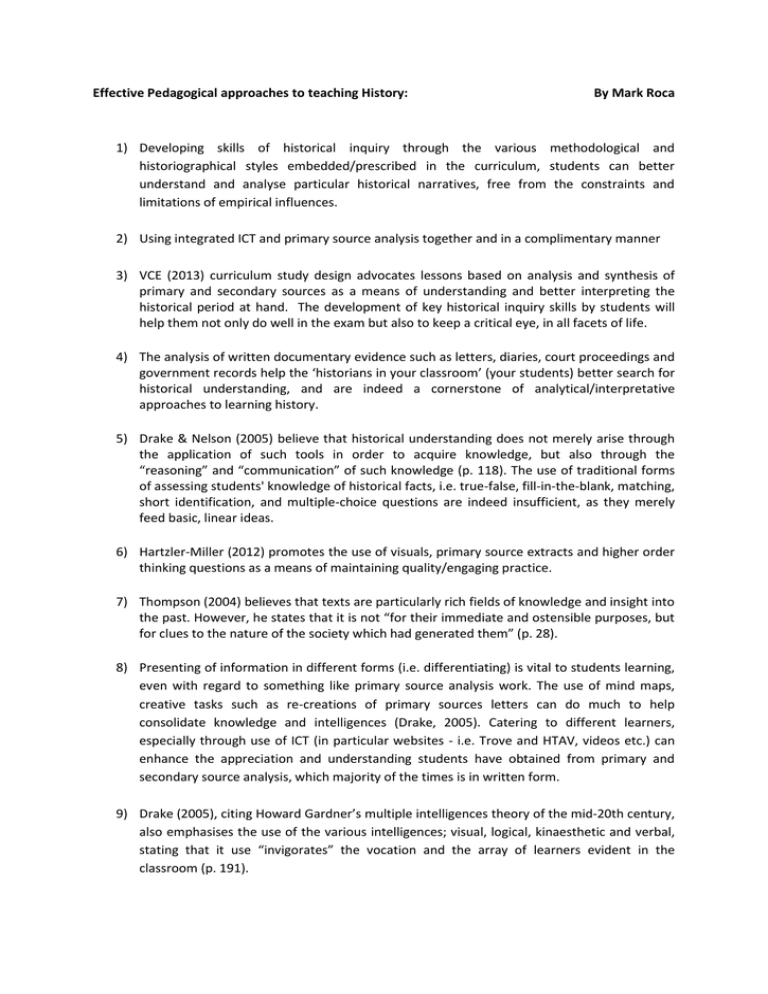
Effective Pedagogical approaches to teaching History: By Mark Roca 1) Developing skills of historical inquiry through the various methodological and historiographical styles embedded/prescribed in the curriculum, students can better understand and analyse particular historical narratives, free from the constraints and limitations of empirical influences. 2) Using integrated ICT and primary source analysis together and in a complimentary manner 3) VCE (2013) curriculum study design advocates lessons based on analysis and synthesis of primary and secondary sources as a means of understanding and better interpreting the historical period at hand. The development of key historical inquiry skills by students will help them not only do well in the exam but also to keep a critical eye, in all facets of life. 4) The analysis of written documentary evidence such as letters, diaries, court proceedings and government records help the ‘historians in your classroom’ (your students) better search for historical understanding, and are indeed a cornerstone of analytical/interpretative approaches to learning history. 5) Drake & Nelson (2005) believe that historical understanding does not merely arise through the application of such tools in order to acquire knowledge, but also through the “reasoning” and “communication” of such knowledge (p. 118). The use of traditional forms of assessing students' knowledge of historical facts, i.e. true-false, fill-in-the-blank, matching, short identification, and multiple-choice questions are indeed insufficient, as they merely feed basic, linear ideas. 6) Hartzler-Miller (2012) promotes the use of visuals, primary source extracts and higher order thinking questions as a means of maintaining quality/engaging practice. 7) Thompson (2004) believes that texts are particularly rich fields of knowledge and insight into the past. However, he states that it is not “for their immediate and ostensible purposes, but for clues to the nature of the society which had generated them” (p. 28). 8) Presenting of information in different forms (i.e. differentiating) is vital to students learning, even with regard to something like primary source analysis work. The use of mind maps, creative tasks such as re-creations of primary sources letters can do much to help consolidate knowledge and intelligences (Drake, 2005). Catering to different learners, especially through use of ICT (in particular websites - i.e. Trove and HTAV, videos etc.) can enhance the appreciation and understanding students have obtained from primary and secondary source analysis, which majority of the times is in written form. 9) Drake (2005), citing Howard Gardner’s multiple intelligences theory of the mid-20th century, also emphasises the use of the various intelligences; visual, logical, kinaesthetic and verbal, stating that it use “invigorates” the vocation and the array of learners evident in the classroom (p. 191). 10) Excursions remain a great example of an approach that helps feed the ‘intelligences’ of learners. Immersive learning experiences, such as attending museum exhibits or even archival centres promotes more hands-on contact with objects, artefacts, costumes, images, texts and data. The strategy of utilising stimulating environments, such as the Chinese Museum or the Bunjilaka Aboriginal Cultural Centre, will allow students to develop their historical reasoning and help open up new avenues of historical inquiry that builds on from basic understandings (Paris , 1997). 11) History as a transformative humanistic inspiration. Southgate (2001) believes that by history “effecting” as well as “affecting” the future, the wrongs of the past can be made right (p. 140). Indeed, one of the past wrongs was in the empirical view of history historians and teachers expelled on the world previously. 12) Bhattacharya (1988) asserts that a richer historical experience can be felt from studying less conventional areas of history such as social history and non-western cultures, as it is these histories through much of the modern period which have gone overlooked and oppressed by the institutions. The ‘history from below’ approach to teaching promotes a more dynamic and holistic approach to history and “widens the scope of history to the hidden realms of the defeated and oppressed” (Perry, 2002, p. 107). References: Bhattacharya, S. (April, 1983) 'History from Below’, Vol. 11, No. 4, pp. 3-20, Social Scientist. Retrieved from http://www.jstor.org/stable/3517020 Drake, F.D., & Nelson, L.R (2005). Engagement in teaching history: Theory and practices for middle and secondary teachers, (pp. XXX) (1st Edition). Upper Saddle River, NJ: Pearson Hartzler-Miller, C. (2012) Theory & Research in Social Education. Volume 29, Issue 4. Making Sense of “Best Practice” in Teaching History. New York: Routledge, 672-695 Paris, S. G. (1997). Situated motivation and informal learning, Journal of Museum Education, 22(2/3), 22-27 Southgate, B. (2001), History: What and Why? Ancient, Modern, and Postmodern Perspectives (2nd Ed.). New York: Routledge Thompson, W. (2004). Postmodernism and History: theory and history. New York: Palgrave VCAA (2013) VCE Study Design: Revolutions. Retrieved from http://www.vcaa.vic.edu.au/Documents/vce/history/history-sd.pdf



